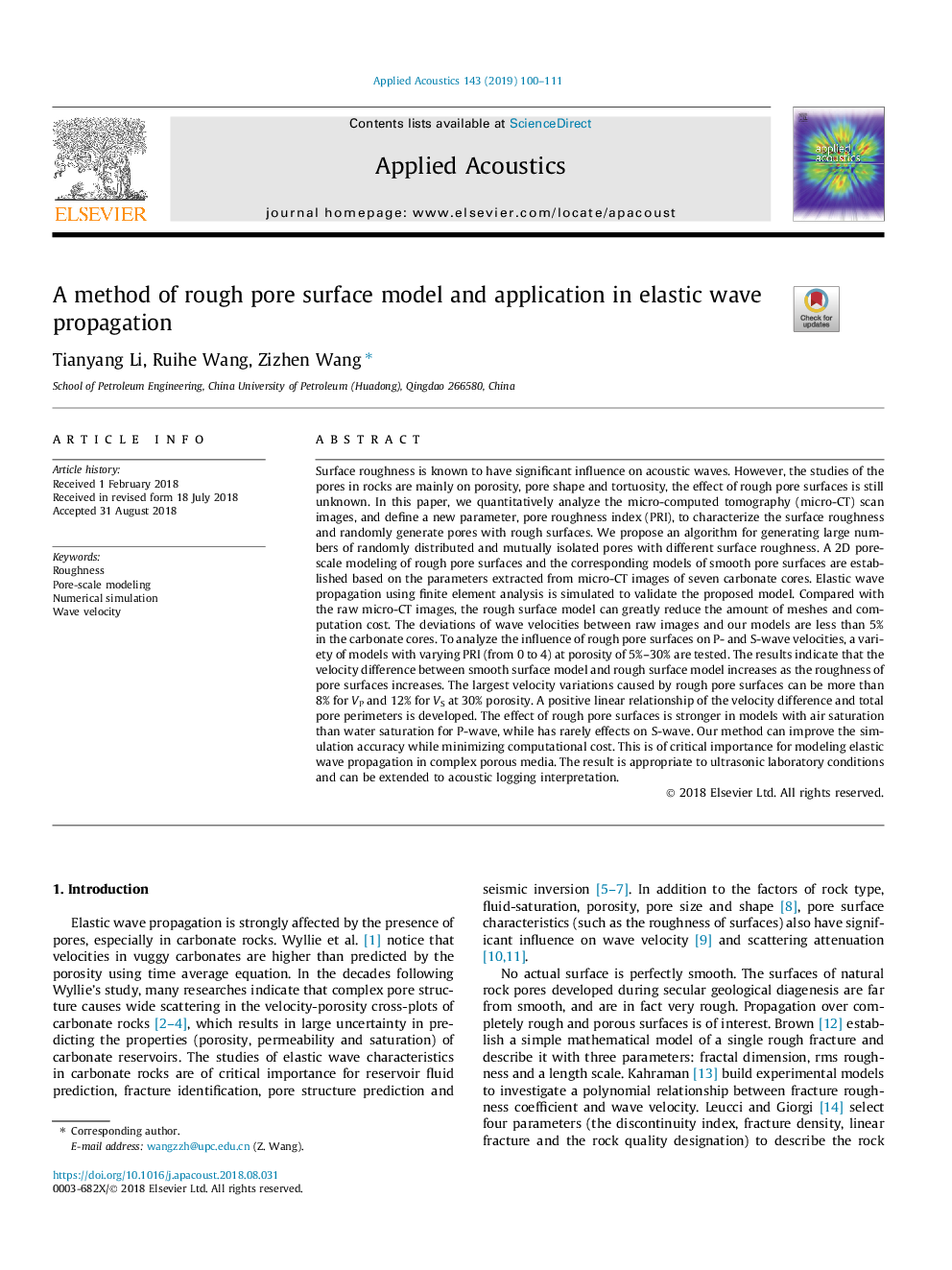| کد مقاله | کد نشریه | سال انتشار | مقاله انگلیسی | نسخه تمام متن |
|---|---|---|---|---|
| 10140132 | 1645994 | 2019 | 12 صفحه PDF | دانلود رایگان |
عنوان انگلیسی مقاله ISI
A method of rough pore surface model and application in elastic wave propagation
ترجمه فارسی عنوان
یک روش از مدل سطح نفوذ خشن و کاربرد در انتشار موج الاستیک
دانلود مقاله + سفارش ترجمه
دانلود مقاله ISI انگلیسی
رایگان برای ایرانیان
کلمات کلیدی
خشونت، مدلسازی مقیاس پوسته، شبیه سازی عددی، سرعت موج،
موضوعات مرتبط
مهندسی و علوم پایه
سایر رشته های مهندسی
مهندسی مکانیک
چکیده انگلیسی
Surface roughness is known to have significant influence on acoustic waves. However, the studies of the pores in rocks are mainly on porosity, pore shape and tortuosity, the effect of rough pore surfaces is still unknown. In this paper, we quantitatively analyze the micro-computed tomography (micro-CT) scan images, and define a new parameter, pore roughness index (PRI), to characterize the surface roughness and randomly generate pores with rough surfaces. We propose an algorithm for generating large numbers of randomly distributed and mutually isolated pores with different surface roughness. A 2D pore-scale modeling of rough pore surfaces and the corresponding models of smooth pore surfaces are established based on the parameters extracted from micro-CT images of seven carbonate cores. Elastic wave propagation using finite element analysis is simulated to validate the proposed model. Compared with the raw micro-CT images, the rough surface model can greatly reduce the amount of meshes and computation cost. The deviations of wave velocities between raw images and our models are less than 5% in the carbonate cores. To analyze the influence of rough pore surfaces on P- and S-wave velocities, a variety of models with varying PRI (from 0 to 4) at porosity of 5%-30% are tested. The results indicate that the velocity difference between smooth surface model and rough surface model increases as the roughness of pore surfaces increases. The largest velocity variations caused by rough pore surfaces can be more than 8% for VP and 12% for VS at 30% porosity. A positive linear relationship of the velocity difference and total pore perimeters is developed. The effect of rough pore surfaces is stronger in models with air saturation than water saturation for P-wave, while has rarely effects on S-wave. Our method can improve the simulation accuracy while minimizing computational cost. This is of critical importance for modeling elastic wave propagation in complex porous media. The result is appropriate to ultrasonic laboratory conditions and can be extended to acoustic logging interpretation.
ناشر
Database: Elsevier - ScienceDirect (ساینس دایرکت)
Journal: Applied Acoustics - Volume 143, 1 January 2019, Pages 100-111
Journal: Applied Acoustics - Volume 143, 1 January 2019, Pages 100-111
نویسندگان
Tianyang Li, Ruihe Wang, Zizhen Wang,
